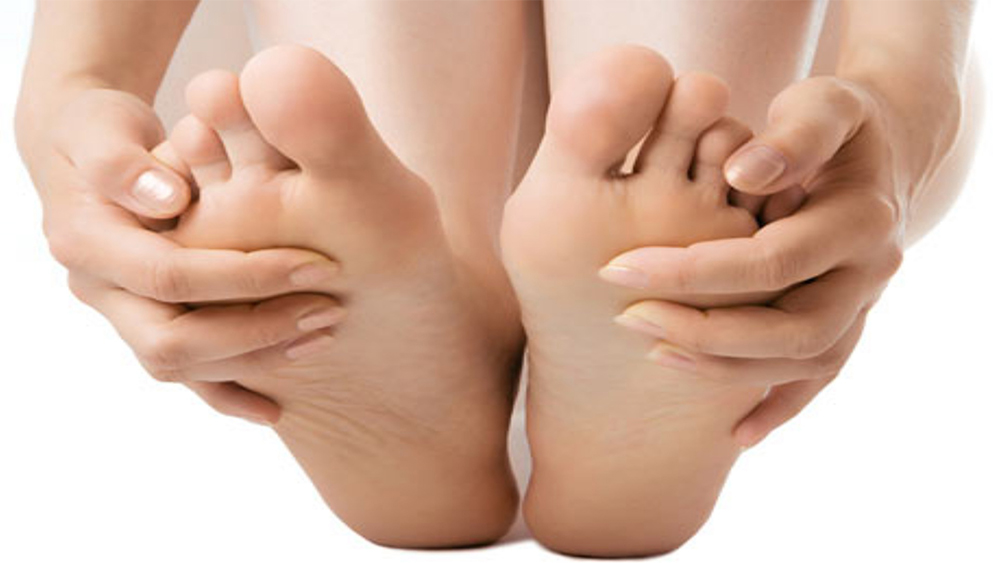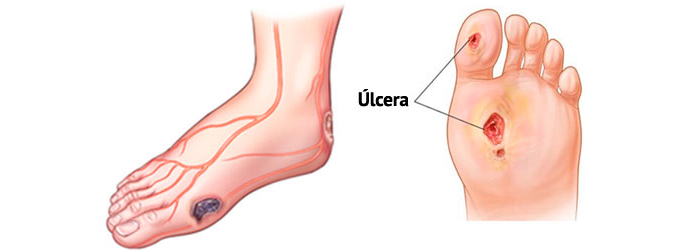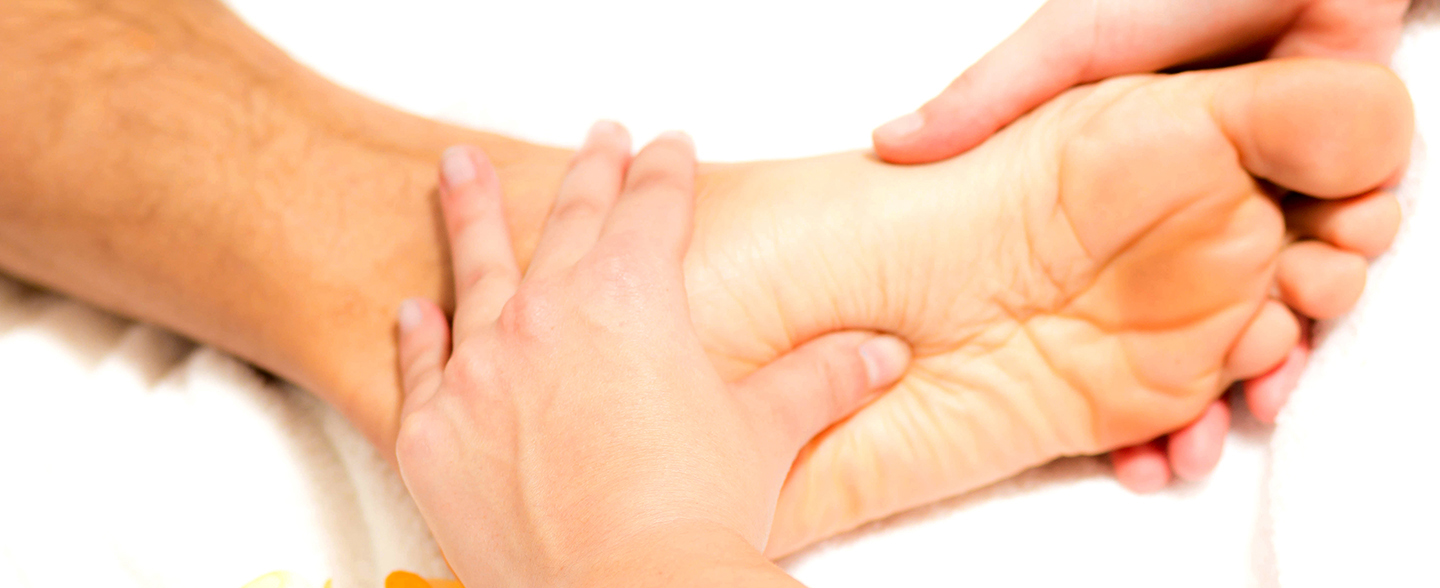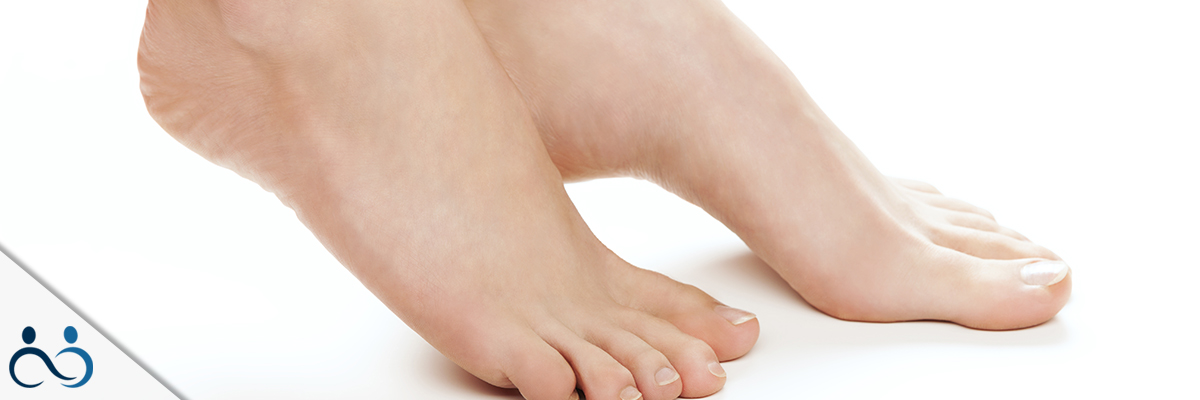Diabetic neuropathy or, as it is commonly known, the ‘diabetic foot’, is one of the consequences that can lead to diabetes. Its incidence increases in parallel with the duration and severity of hyperglycemia. It is estimated that approximately 15% of people with diabetes will develop a foot injury throughout their illness and that 25% of hospital admissions for people with diabetes are related to foot problems. This makes us consider the foot of people with diabetes as a target of the diseases’ complications.
Inadequate levels of glucose in blood, accompanied by other complications associated with diabetes, such as hypercholesterolemia or high blood pressure, leads to loss of sensation in the foot as well as circulation problems due to damage to the nerve and blood vessels. This leads to the appearance of ulcers that can worsen and in some cases, lead to amputations. These injuries arise in the plant and in any area of the foot, this is why it is important to go to a healthcare centre as soon as possible when these wounds appear.
The feet are an extremely sensitive area, which must be protected conveniently since its function is essential. At Hospital La Paloma, through our Diabetic Foot Unit, we want all tissues in this area of the anatomy to be protected if you have diabetes. It is convenient to keep in mind that the foot is formed by 28 bones, 114 ligaments, 33 joints, 20 muscles, 7,000 nerve endings and more than 100 tendons. All these tissues are at serious risk, if patients do not control their disease.
Damage to the nerves
Poorly controlled Diabetes can cause significant damage to the nerves. The main affectation is called demyelination, which causes the covering of the nerves, called myelin sheath, to deteriorate and affect the inside nervous current.
The patient will begin to notice loss of sensitivity, numbness, pain and other similar signs. In addition, this damage will also begin to cause nerve fiber loss.
What are the most common symptoms?

The loss of sensitivity is the most frequent symptom. This causes the patient not to perceive the most obvious signs that an injury and / or infection is developing, such as heat sensation or pain.
Another symptom is the appearance of an ulcer. This type of injury requires specialised attention, since otherwise it could spread and lead to amputation of the affected limb.
Also, some patients perceive sensations such as cramps and tingling. This is caused by the malfunction of the peripheral nerves and the deterioration of the circulatory system in this area.
When there is pain
Sometimes neuropathy or diabetic foot can cause pain, which is known as neuropathic pain. It is interesting, because the patient feels pain and, however, is unable to feel a painful stimulus in the foot.
This type of pain should be studied from a multidisciplinary point of view, for it is necessary for it to be analysed by neurologists, to rule out other possibilities, such as lack of circulation or nervous conditions that are at a higher level, as the spinal cord.
The treatment of painful neuropathy sometimes requires complex treatments and is difficult to treat. In the Diabetic Foot Unit we have precise tools to diagnose and treat these types of complications in conjunction with specialists in neurology, internists and pain unit.
Consequences
The main consequence is, in its turn, the first symptom. The patient will begin to perceive a lack of sensitivity in the foot and symptoms such as pain or discomfort will begin to disappear from the affected person. Meaning that a person with diabetic neuropathy can step on a glass while walking barefoot and not notice anything.
If certain motor nerves are affected, the patient may also suffer deformations that may predispose the affected to suffer certain injuries. In addition, it can also cause malfunctioning of the ability of the foot to sweat, which will generate an increase in skin dryness and more sensitive to generate wounds.
Relationship of neuropathy and the appearance of ulcers
Neuropathy is implicated in 80% of diabetic ulcers. The annual incidence of diabetic foot increases from less than 1% in patients without neuropathy to more than 7% in patients with neuropathy. The biggest problem is that diabetic neuropathy does not hurt, so it is necessary to detect it in time through very simple tests that we carry out at Hospital La Paloma. Once diagnosed, preventive measures will play an essential role to avoid undesirable consequences.
The difficulty of ulcers

The control of ulcers and injuries is an element to consider. Hospital de La Paloma has in its Diabetic Foot Unit the necessary human and technological resources to attend to these injuries in all its phases. There are studies that show that the poor metabolic control of diabetes produces a malfunction of leukocytes, which are the first line of defense of the organism against infection. We could call these alterations diabetic immunopathy. There are other alterations at the capillary level that can hinder the passage of leukocytes to the exact place where the infection is occurring, which makes its solution difficult.
If there is an added ischemia, both the body’s defense factors and antibiotics will not reach the bacterial proliferation zone at the appropriate concentration. At the same time, there are other processes that are currently being investigated that affect the healing of these ulcers. What is certain is that once the infection is inoculated into the foot of the diabetic, it spreads rapidly through the tendons, affecting rapidly the bone and produces necrosis with high frequency even in patients without ischemia.
Diabetic Foot Treatment and ulcer approach

The main treatment in Diabetic Foot is the prevention and control of the disease. At Hospital La Paloma we control accurately the evolution of diabetes. The controls are carried out based on the risk of the patient and should be performed at least once a year, increasing according to the symptoms of the patients.
When ulcers arise it means that the disease is without proper control. The first thing we do in our Unit is to classify and identify the type of ulcer suffered by the patient to proceed to their care. The interventions to treat them are based essentially on an adequate injury coverage, infection treatment, and pressure relief.
People with diabetes who have had an ulcer previously should take special care with their hygiene, foot care and the use of appropriate footwear. The great challenge is also to prevent recurrences since its rate in patients who have presented an ulcer is 66% after five years.
Normally we will develop a moist cure, which consists of maintaining a moist environment in the wound since it has proven to be the ideal means to achieve healing. This is achieved through the use of different types of products and bandages. Either way, the ulcer must be treated from an etiopathogenic point of view. This means that if an ulcer is ischemic it should be assessed by vascular surgery because if the blood supply is not increased it will not close. In case of neuropathic injuries, if pressure is not released the ulcer will not close, regardless of whether we use the most sophisticated moist cure products. The key to ulcer healing is to identify and treat its cause.
Superficial injuries and mild infections can be treated on an outpatient basis, but with close monitoring of the patient. Regardless of whether the cures are performed at home, a healthcare professional should check the patient. There are infections that can evolve terribly in days or even hours. If the patient worsens, he will require hospitalization, since sometimes the leg or even his life may be compromised.
The release treatment in ulcers is another treatment that should be indicated. By releasing it is necessary to understand the relief of the pressures that the ulcer suffers. High pressures in an insensitive foot are the cause of neuropathic ulcers. If there is also ischemia we would be facing a neuro-ischemic ulcer, but the release will be equally important. In the Diabetic Foot Unit of Hospital La Paloma we will recommend the most appropriate system according to the peculiarities of each patient.
Preventive measures
- Patients with neuropathy should keep certain routines in mind, to avoid future problems.
- Wear appropriate footwear, which must be purchased late in the afternoon. This is because it is the time of day when the foot is more swollen. In this way, we guarantee that they do not squeeze us at any time of the day.
- Before putting on footwear and socks, they should be thoroughly checked. This will help discard foreign bodies that can cause us an injury and that we would not notice otherwise.
- When we go into the water, check the temperature of the water to avoid burns.
- Avoid walking barefoot is another recommendation, while we must go regularly to the podiatrist.
- Maintain good hydration of the feet and avoid using blades on them.










